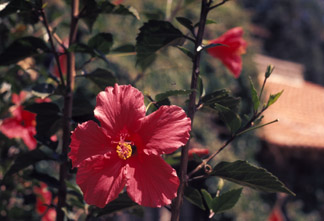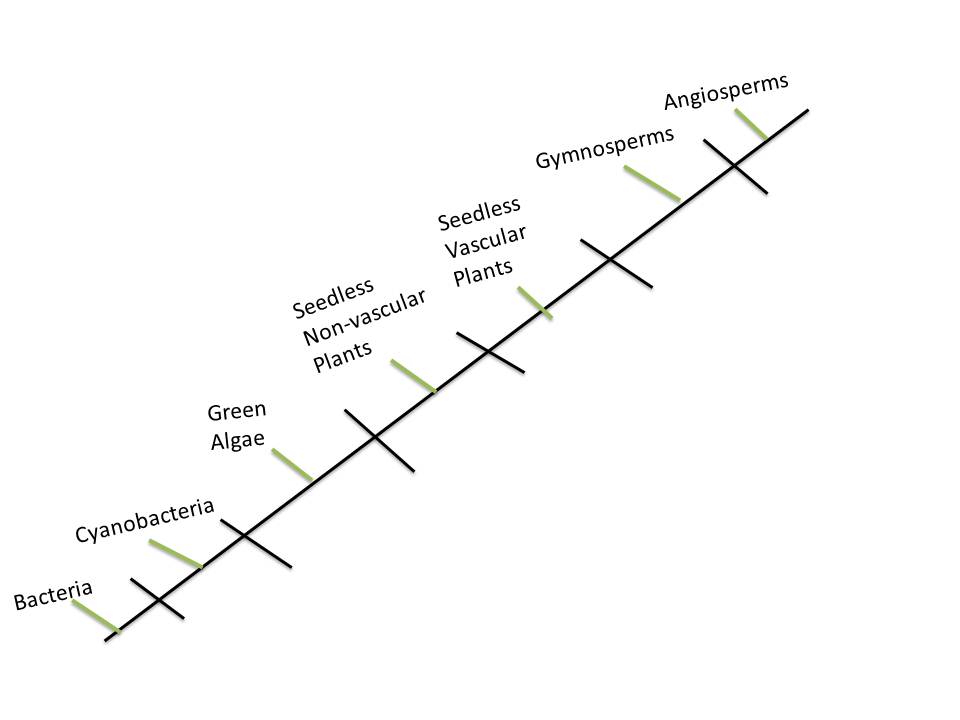Classification
What evolutionary characteristics does the Hibiscus rosa-sinensis display for biologists to classify it the way they do?
Domain- Eukarya: multicellular, sexual reproduction, true nucleus, membrane bound organelles
 Kingdom-Plantae:
multicellular, photosynthesizes, contains chlorophyll, has
a cell wall made of cellulose
Kingdom-Plantae:
multicellular, photosynthesizes, contains chlorophyll, has
a cell wall made of cellulose
Phylum- Anthophyta: has ovules that are enclosed in carpels, has true roots, stems, leaves, and contains flowers
Class- Magnoliopsida: eudicots, contains two cotyledons, flowers in groups of four or five, netlike veins, pollen grains have three openings, has secondary growth
Order-
Malvalves:
bands of fibers in the phloem that makes the bark tough,
distinct seed anatomy, and multiple stamens in the flower, petals of the flower
overlap
Family- Malvaceae: occur in almost all geographic regions with the exception of extremely cold areas, usually herbs or shrubs, contain spiny pollen
Genus- Hibiscus L.: contains over 40 species, native to lower climates
Species-Hibiscus rosa-sinensis: The common names are Shoeblackplant and the China rose, Rosa in Latin means rose and sinensis means China
The phylogenic trees below explain the Hibiscus rosa-sinensis compares with other organisms morphologically.
This phylogenic tree is based off of morphological features. This phylogenic tree starts with bacteria, which are a prokaryotes, followed by the Cyanobacteria (formerly Blue-Green Algae). Which at one point were considered a member of the Alga. The Cyanobacteria has the capability to photosynthesize. Next comes the Green Algae, they are believed to have given rise to land plants because they have the same types of chlorophyll (chlorophyll A and chlorophyll B) pigments as land plants. Seedless Non-Vascular plants are considered to be one of the first plants, although they do not contain a vascular system with xylem and phloem vascular tissue. The Seedless Vascular plants, which contain the ferns, however do contain xylem and phloem tissues to circulate nutrients in the plant. The gymnosperms come next because they contain xylem and phloem as well as a seed. The gymnosperms however, do not contain a seed covering on its seed, like the angiosperms do. The gymnosperms tend to produce their seeds in the form of cones. (An example of an gymnosperm would be a pine tree) The angiosperm, which contains the Hibiscus rosa- sinensis, has a seed covering on the seed. The angiosperms are separated into the monocots and the eudicots. Monocots only contain one cotyledon and have veins that run parallel. An example of a monocot would be corn. Eudicots contain two cotyledons. A few main characteristics of a eudicot are the leaves contain netlike veins, a taproot (which is one main root), and flowers in groups of four or five.

To view a larger version of this image click here.
This phylogenic tree compares the Hibiscus rosa-sinensis with other species within the genus Hibiscus. All five species share the morphological characteristics of staminal column teeth, pollen spines, styles, stigmata shape (the female reproductive part), stigmata position, gossypol glands (a yellow pigment), and pollen shape in common. The Hibiscus rosa-sinensis and the Hibiscus pentaphyllus share the morphological traits of the pollen aperture (an aperture is an opening) and the pollen aperture type. The Hibiscus calyphllus and the Hibiscus ludwiggi share the morphological traits of hypocotyl (the embryo of the cotyledons) and endosperm (which is the tissue produced at fertilization).
To learn more about the habitat click here!
To return home click here!
